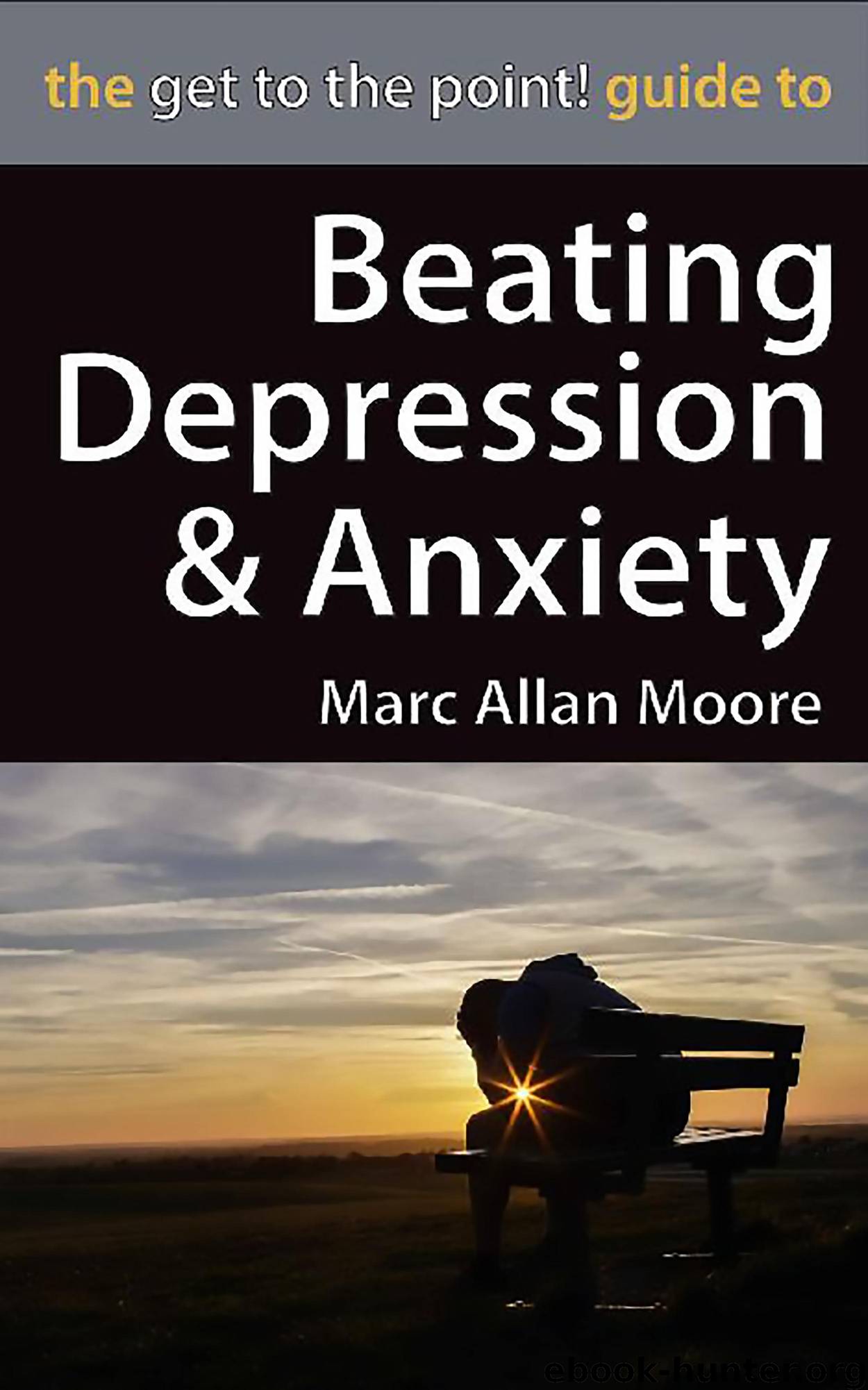The Get to the Point! Guide to Beating Depression and Anxiety by Marc Allan Moore

Author:Marc Allan Moore
Language: eng
Format: azw3, epub
Published: 2020-07-18T18:30:00+00:00
What is anxiety?
At its root, anxiety is a normal reaction, common to all humans: simply the body’s natural reaction to danger, either impending or imminent. However, for people with overactive anxious reactions, anxiety can all too easily become an impediment to their daily life, rather than an occasionally useful impulse.
In days past, an anxious reaction might have been provoked by the proximity or possibility of a physical, potentially life-threatening danger, acting as a sort of early warning system which cued the individual to stop whatever they might be doing and scan their surroundings for signs of potential threats to their well-being. At such times, the ‘fight or flight’ response stimulated by the onset of anxiety served to provide an extra boost in urgency and emphasized the importance of achieving a favorable resolution, flooding the system with adrenaline to help provide extra energy, increasing the rate of breathing and heartbeat, and concentrating blood flow to the brain. These reactions helped our ancestors survive in a brutal world of desperate struggle for day-to-day survival—conditions which were the norm for the overwhelming majority of time that humans existed.
Today, though, thanks to advances in technology, medicine, agriculture, transportation, and other societal progress, most people rarely face such dire circumstances on a regular basis, if ever. And while this overall improvement of the human condition has proven largely beneficial, as an unfortunate result anxiety is far more commonly triggered by a wide variety of situations, ranging from workplace stresses and emotional confrontations to life-changing events and upheavals. Most people will be familiar with the experience of feeling anxious due to an impending test, date, or other situation in which they may be evaluated, for example, and can easily understand feeling the symptoms of anxiety in similar circumstances. Anxiety may also be brought on by the mere possibility or suggestion of impending distress, such as upsetting news reports, or the uncertainty that comes from any number of situations we encounter every day—the prospect of automobile collisions, for example, or worry over potential medical problems. And regrettably, many of the selfsame technological advances that have improved the human condition have also exacerbated the conditions which fuel anxiety in many people, including lack of physical activity, decreased exposure to sunlight, reduced interaction and socialization with other people, and unbalanced, nutrient-deficient diets high in refined carbohydrates, stimulants like caffeine, and depressants such as alcohol. When these factors combine in an individual who is prone to anxiety or anxiety disorders, it can be hard to determine precisely what may have incited their individual anxiety to flare up—but regardless of its causes, the results can inarguably be overwhelming.
Part of the reason anxiety can be so disruptive is that it produces a broad range of symptoms that manifest in four disparate categories: physical, emotional, cognitive, and behavioral. Not all anxiety sufferers will experience each symptom, luckily, nor might every symptom strike at the same time, but anxious tendencies and anxiety disorders can result in combinations of any of the following symptoms.
Among the
Download
The Get to the Point! Guide to Beating Depression and Anxiety by Marc Allan Moore.epub
This site does not store any files on its server. We only index and link to content provided by other sites. Please contact the content providers to delete copyright contents if any and email us, we'll remove relevant links or contents immediately.
Should I Stay or Should I Go? by Ramani Durvasula(6785)
Why We Sleep: Unlocking the Power of Sleep and Dreams by Matthew Walker(5642)
Fear by Osho(4085)
Flow by Mihaly Csikszentmihalyi(4053)
Rising Strong by Brene Brown(3781)
Why We Sleep by Matthew Walker(3773)
Too Much and Not the Mood by Durga Chew-Bose(3694)
How to Change Your Mind by Michael Pollan(3679)
The Hacking of the American Mind by Robert H. Lustig(3580)
Lost Connections by Johann Hari(3455)
He's Just Not That Into You by Greg Behrendt & Liz Tuccillo(3303)
Evolve Your Brain by Joe Dispenza(3051)
What If This Were Enough? by Heather Havrilesky(2945)
Resisting Happiness by Matthew Kelly(2887)
Crazy Is My Superpower by A.J. Mendez Brooks(2860)
The Courage to Be Disliked by Ichiro Kishimi & Fumitake Koga(2797)
The Book of Human Emotions by Tiffany Watt Smith(2771)
Descartes' Error by Antonio Damasio(2731)
In Cold Blood by Truman Capote(2685)
